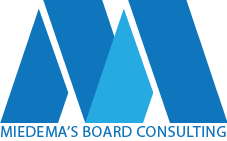I recently wrote a blog about CEO Performance Reviews but how often does the board review its own performance? Unless a board has a regular schedule of assessing itself, it may develop bad habits or miss gaps in board member training and development.
Board performance reviews should cover three main topics: the meeting itself, Board Chair performance and overall board performance. Reviews are best done by conducting surveys immediately following a meeting. Boards can choose to use an online survey tool or a good old-fashioned paper copy at the end of the meeting. The method that has the highest response rate is best. The frequency of the surveys is at the board’s discretion. Boards that meet monthly might opt to do the survey once a quarter while boards that meet quarterly would likely want to conduct all or a portion of the survey after every meeting.
To assess the meeting itself the survey can ask if the meeting materials were received in time to prepare and whether the information received was at the appropriate level to make board decisions. Board members should also be asked to assess the quality of the discussions and whether action items and next steps were acted on to ensure there is ongoing progress.
The Board Chair’s performance can be monitored from a number of angles. Since the Board Chair and the CEO develop the meeting agenda it is important feedback for the Chair to know if the board members find the items on the agenda are appropriate and at the right level for board discussion. The board should also assess if the Chair kept the board on track, kept discussions focused on the right level of detail (and pulled the discussion back on track if it gets sidelined into administrative or operational details), stuck to the agenda, allowed enough time for discussion, encouraged participation from everyone and, in the end, developed a culture of trust and respect.
Assessing overall board performance gives the board members an opportunity to reflect on whether their discussions were made with an eye on the vision and mission and whether there were items of strategic significance that were missed. This category is also the place to do a periodic review of board basics to ensure everyone knows and understands their responsibilities. Ideally this would be tied back to the responsibilities listed in the Board Policy Manual. For example, do they understand and support the mission, do they read and understand the financial statements, have they made a donation to the organization in the last year, etc.
Finally it is good to close the survey with an open-ended question asking for any other general feedback. This is a catch-all to see what else is on board members minds or if there are any issues that were not addressed by the other questions. It is better to have issues in the open and acted on than grumbled about in the parking lot after the meeting. For boards that function well, this question can draw out some great encouragement and positive feedback.
The surveys should be reviewed and reported back on by the Governance Committee or whichever committee is responsible for board development to ensure feedback and problem areas are acted on. Be sure to include it in the committee’s Terms of Reference and on their work plan to ensure it becomes on ongoing part of the boards culture.
Board self-assessments only go half way. Stay tuned next time for the potentially uncomfortable subject of having board members do peer assessments of each other’s performance!







